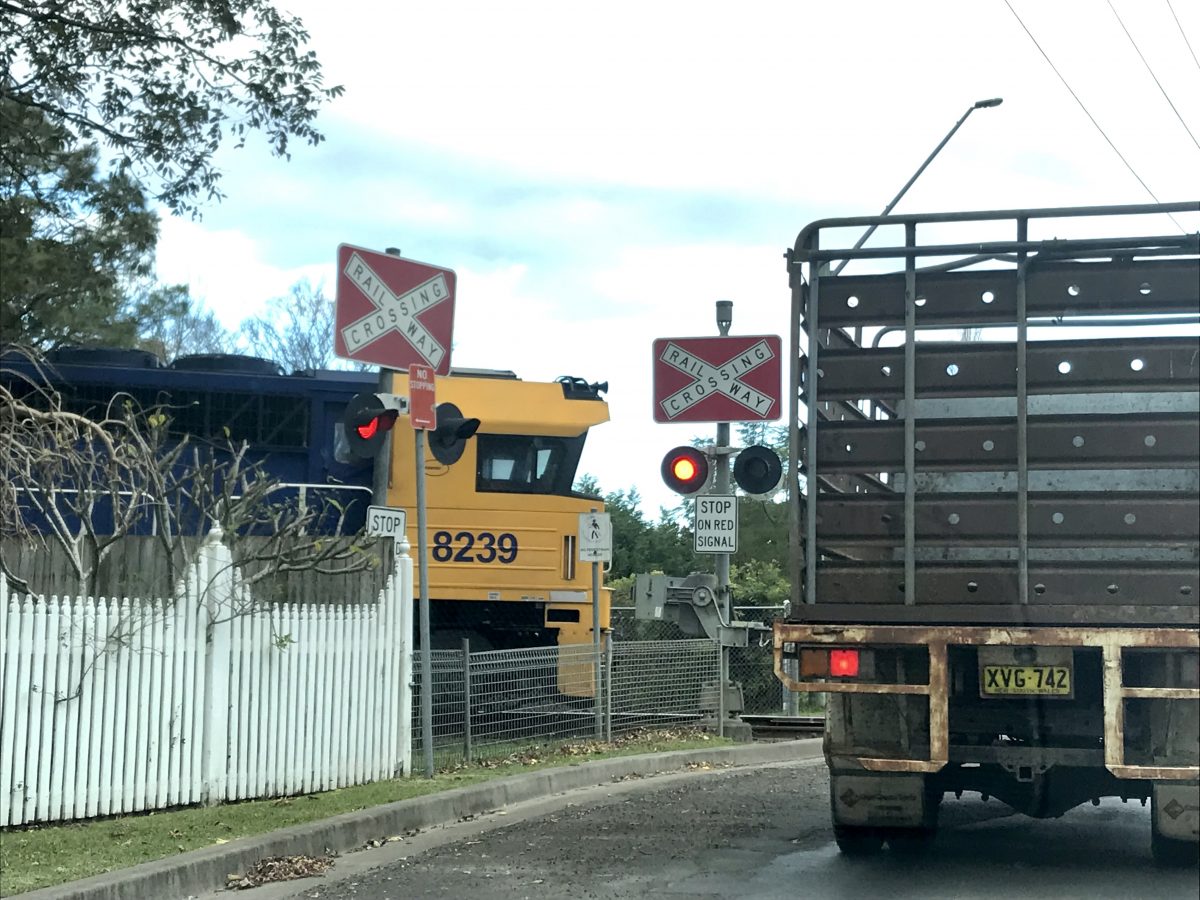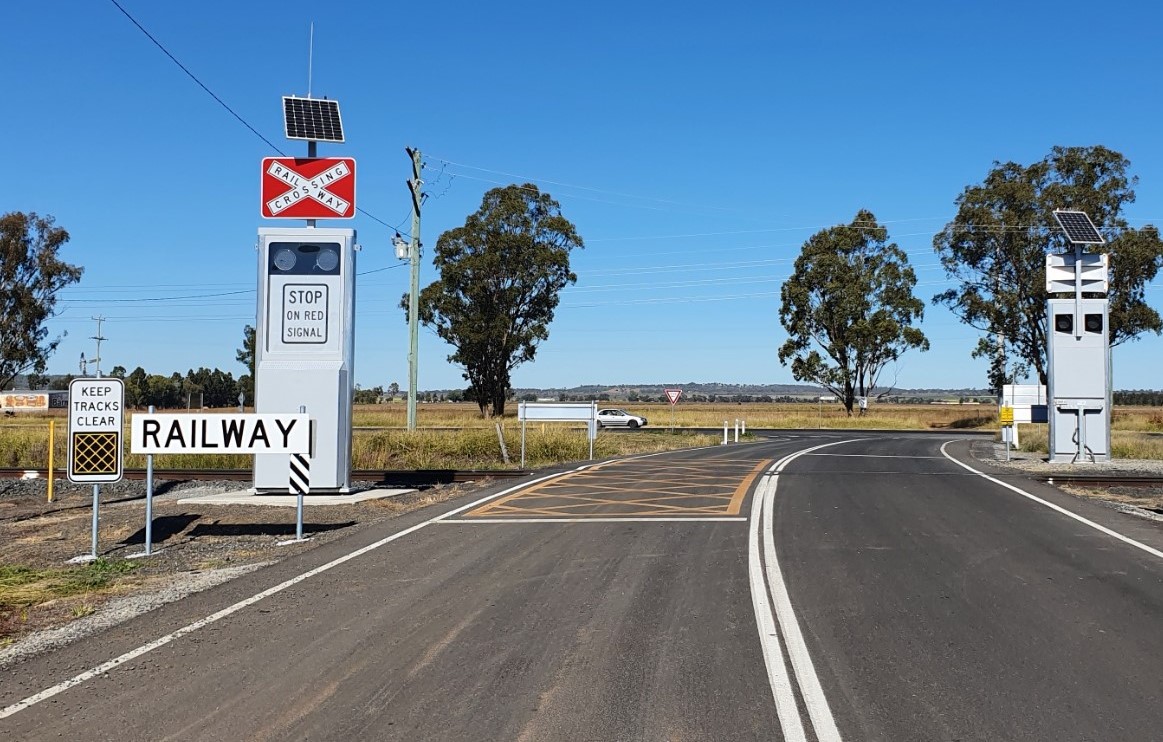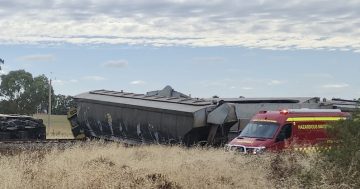
A modular, low-cost wireless solution may revolutionise safety signage at level railway crossings throughout regional and rural NSW. Photo: Katrina Condie.
Southern NSW railway level crossing safety proponents have their fingers crossed that new high-tech wireless signage will be trialled in this part of the state.
The $1.2 million trial of new digital technology, set to improve level crossing safety in rural and regional areas, will soon get underway at a location yet to be determined by NSW Regional Roads and Transport Minister Jenny Aitchison, in consultation with the Australian Rail Track Corporation (ARTC).
The technology, named Rail Active Crossing System (RAXS), is a modular, low-cost, solar-powered wireless solution specifically designed for installation at rural and remote locations to turn passive level crossings into active sites.
This will be done using both flashing lights at the crossing as well as wireless train-activated advanced signalling, which warns motorists a train is approaching the level crossing ahead.
In the rare event of a system disruption, the signage will automatically go into a ”stop sign” mode rendering the location a passive crossing – with motorists having to obey the stop sign rules.
By comparison, a system disruption will see warning bells and lights activated at active level crossings until maintenance crews arrive.
The system is solar-powered, wireless, has a modular design, can be quickly and cost-effectively installed, and needs less maintenance, potentially overcoming some of the barriers to adopting more activated level crossings.
Traditional active level crossing systems and the accompanying train detection systems generally rely on mains power or large-scale solar installations, and extensive (and expensive) trenching and cabling on either side of the crossing, often around a kilometre or more, is used to provide track circuits to activate crossing equipment.
The system’s innovative design also allows for new features to be developed and tested.
As part of the trial, Transport for NSW will be seeking community and industry feedback on the use of advanced warnings and developing future features to improve level-crossing safety.

The innovative, Australian-developed active control railway crossing system has just received type approval after completing a successful trial with Queensland Rail. Image: Photo: Rail Safety Systems.
Installation of the first level crossing with the new technology is due to occur this year and Transport for NSW is working with ARTC to determine a suitable location.
There are more than 2700 level crossings in NSW, including 1307 on public roads, and of these, 858 are passively controlled by stop or give way signage.
The NSW Government is providing $715,000 in funding for the trial, along with $500,000 from the Australian Government’s Regional Australia Level Crossing Safety Program.
Ms Aitchison said she was pleased to announce the long-awaited trial, especially for regional communities, survivors and family members of those killed or injured in level-crossing crashes.
“Geography, lack of access to power, and other infrastructure constraints meant it was not always possible to install traditional level-crossing treatments,” she said.
If successful, Ms Aitchison said, the trial of RAXS technology could make activating more regional level crossings more affordable and lead to a faster rollout.
“Up to three sites could be upgraded for the cost of traditional level-crossing treatments,” she said.
Federal Infrastructure, Transport, Regional Development and Local Government Minister Catherine King said she looked forward to seeing this technology make a difference during the trial, and to continuing to work with the NSW Government to advance level-crossing safety in the state.
Ms King also announced a national driver education campaign would be introduced this year in support of the zero-harm goal at Australia’s level crossings.
The announcement came during a national level-crossing safety roundtable in Brisbane last week.
Ms King said every year, crashes at level crossings resulted in injuries, loss of life, and significant economic costs, impacting both road and rail users, families and communities.
Original Article published by Edwina Mason on About Regional.













